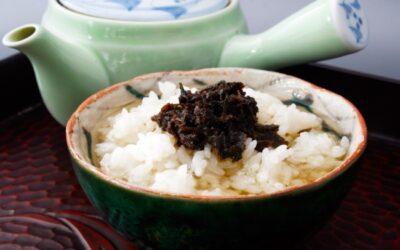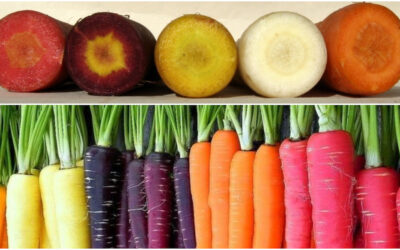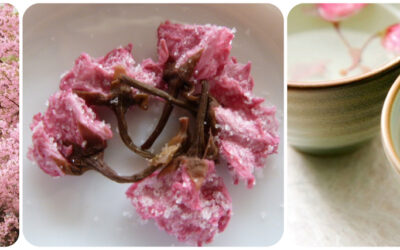
Kitchen Culture Cooking Club
EXPLORE and PRACTICE Japanese cooking in your own kitchenAbout Kitchen Culture Cooking Club
Welcome to the Kitchen Culture Cooking Club, a community space providing encouragement to those who want to EXPLORE and PRACTICE Japan’s washoku wisdom in their own kitchens.
To facilitate this, themed projects will be posted to this page periodically. Project Assignments and links to relevant reference material stored on this site will be posted to this page. Anyone, anywhere in the world, with a sincere interest in Japanese food culture is welcome to browse the contents of this page and then replicate the themed project in their own kitchen.
For those who wish to display-and-discuss their projects with like-minded people, I invite you to join the KITCHEN CULTURE Cooking Club Facebook Group (formerly the TSUDOI Project), an interactive community space.
PROJECT Tomato Salad
TOMATOES combine well with both land and sea vegetables, and with cold noodles too, to make a variety of SALADS. This PROJECT Tomato Salad is about creating your own “house” salad featuring tomatoes.
To start you off, here is a recipe for enjoying tomatoes OHITASHI-style
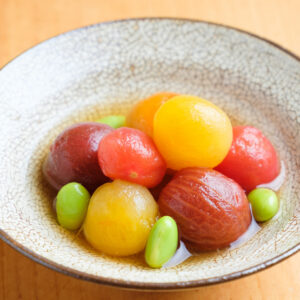

TOMATOES and COLD NOODLES
Tomatoes and cold noodles are a winning combination. Find information and inspiration in the posts devoted to:
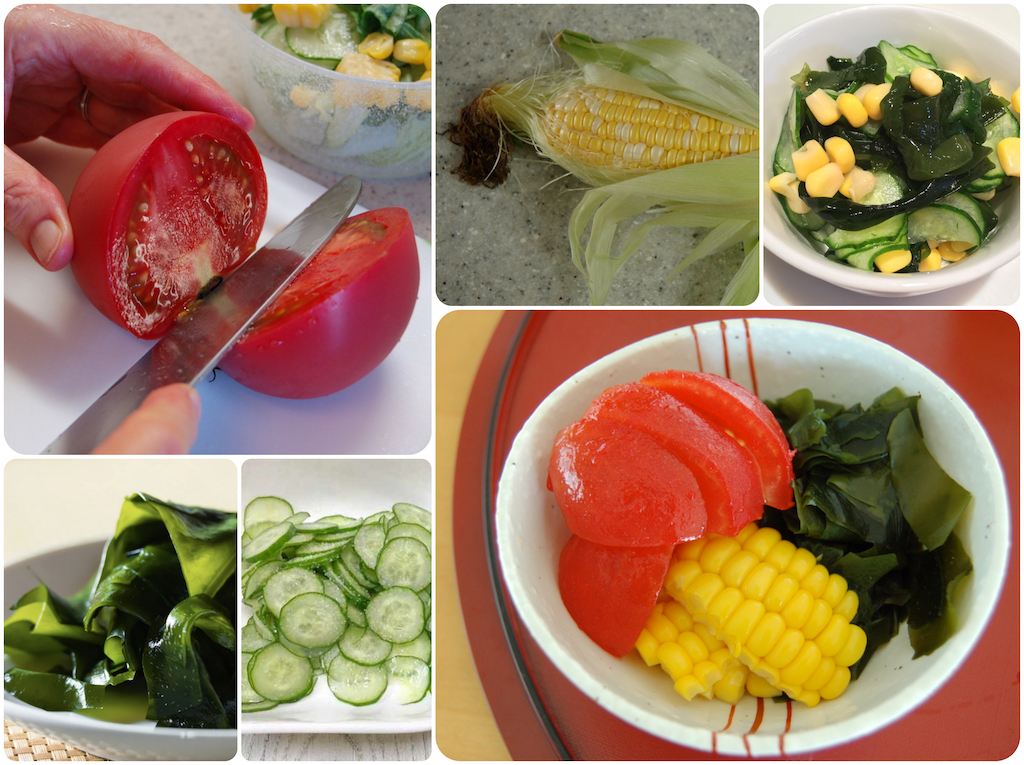
TOMATO, CORN and WAKAMÉ
This combination of land and sea veggies makes a terrific salad, a summertime favorite in Japan.
Here is a primer on using fresh and/or dried calcium-rich wakamé (Undaria pinnatifida; a type of algae). DOWNLOAD Anatomy of Wakamé.
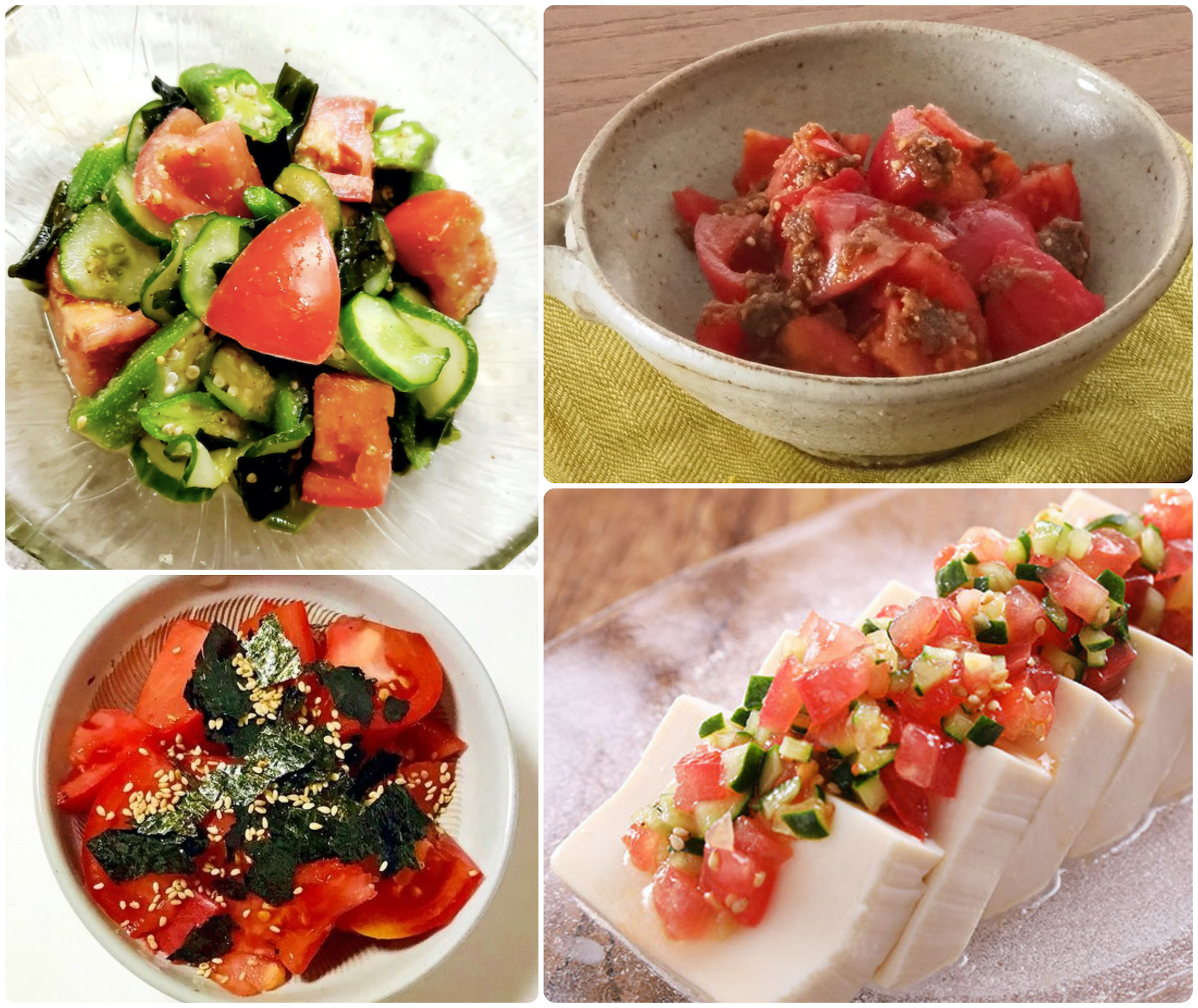
TOMATO, TŌFU, OKRA, BONITO FLAKES and NORI
In Japan, tomatoes are often paired with tōfu in a dish known as hiya yakko.
Bonito flakes (katsuo-bushi also known as okaka) are often used to garnish fresh or briefly blanched vegetables. The fish flakes will be more smoky-aromatic if roasted in a dry skillet before crushing them.
Use this post devoted to okra to help you prepare it well.
Plain, or flavored (aji-tsuke) nori can be crumpled and sprinkled on top of tomatoes — a tart sesame-soy dressing goes well with this. Or, make nori tsukudani and use it as a sauce or dressing.
Recipes and Resources
Stock (Dashi)
Dashi stock is essential to making soups and simmered or stewed dishes. Dashi is also used when making many egg dishes and all sorts of sauces, dips and dressings. Using good dashi will make a noticeable difference in the outcome of so many dishes you prepare.
Click to download recipes for (vegan) Kelp Alone Stock or Standard Sea Stock + Smoky Sea Stock
How to Cook Rice
In Japanese, the word for cooked rice, ご飯 GOHAN, is the same as the word for a meal, ご飯 GOHAN. Indeed rice is central to the meal. Download the Rice with Mixed Grains recipe.
How to Prepare Sushi Rice
Sushi dishes are made with rice that has been seasoned (with sweetened vinegar) AFTER being cooked. Download the Classic Sushi Rice recipe.
Quick Pickles
The Japanese enjoy a wide variety of tsukémono pickles, many can be assembled quickly and are ready to eat within a short time.
Download a recipe for Quick-Fix Hakusai Cabbage.
PROJECT Ocha-Zuké
The two major components are: BROTH and TOPPINGS. Start by picking a broth that will define the character, and general flavor profile, of your ocha-zuké. The recipe for making KELP-ENRICHED TEA BROTH offers several options for using different teas such as smoky hōji...
Colorful CARROTS
Beautiful & Nutritious The pigments that make these carrots so beautiful are also the key to their nutritional power. Orange carrots are especially rich in beta-carotene and vitamin A, both of which help to fight inflammation. Red carrots, like red tomatoes, are...
Komatsuna
KOMATSUNA, a member of the brassica family of leafy greens, has been cultivated in Japan since the Edo period (1603-1868). The naming of the vegetable is attributed to the 8th shogun, Tokugawa Yoshimune. It seems that during a visiting to a shrine near the Komatsu...
EDIBLE SAKURA Blossoms & Leaves
Salt-Cured Cherry Blossoms & Leaves The blossoms and leaves of certain varieties of sakura are made edible by preserving them in salt, in a process known as shio-zuké. Deeply colored yaezakura blossoms are especially prized. When it comes to salt-curing leaves,...

